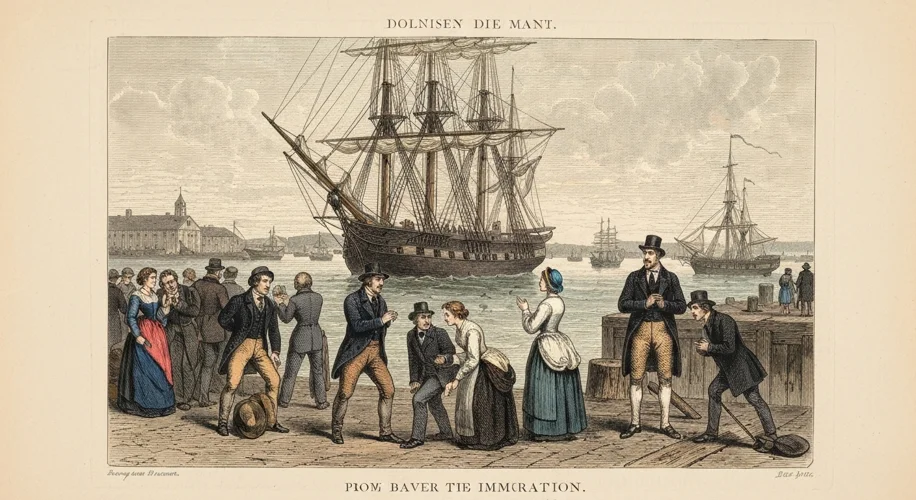Maine, the rugged “Pine Tree State,” evokes images of windswept coastlines, dense forests, and a history steeped in maritime traditions. Yet, beneath this picturesque surface lies a complex and often contentious narrative: the history of immigration enforcement within its borders. From the earliest days of settlement to the present, Maine has grappled with who belongs, who is welcome, and how to manage the flow of people across its perceived boundaries.
Long before the United States existed as a nation, people moved across the lands that would become Maine. Indigenous peoples, such as the Wabanaki Confederacy, had established patterns of seasonal migration and trade for centuries. European exploration and colonization, beginning with the French and later the English, marked the first significant shifts in the region’s demographics, often accompanied by rudimentary forms of control and exclusion based on religious and political allegiances.
The early decades of American nationhood saw Maine, then part of Massachusetts, primarily concerned with managing its own frontiers and its relationship with its powerful neighbor, Canada. The concept of federal immigration enforcement was nascent, and states largely controlled who entered their territories. Early “enforcement” often manifested as local ordinances or policies aimed at preventing the settlement of paupers or individuals deemed undesirable, a reflection of economic anxieties and social hierarchies.

As the 19th century unfolded, the landscape of immigration enforcement began to shift dramatically. The federal government gradually asserted more control, particularly after the Civil War. Maine, with its ports like Portland, became a gateway for new arrivals. While not on the scale of New York or Boston, these ports played a role in the broader national story of immigration. During this era, federal laws began to emerge, attempting to regulate who could enter. The Chinese Exclusion Act of 1882, though its direct impact in Maine was less pronounced than in Western states, signaled a new era of explicitly racialized immigration policy. The focus was increasingly on defining national identity through exclusion, often targeting specific ethnic or national groups deemed a threat to American labor or social order.
The early 20th century brought more formalized federal agencies and broader legislative action. The Immigration Act of 1917, for instance, introduced a literacy test and expanded the categories of inadmissible persons, including those considered politically radical. Maine, like other states, saw federal agents operating at its ports and border crossings, enforcing these evolving national standards. Local sheriffs and state police also played a role, often cooperating with federal authorities in apprehending individuals suspected of violating immigration laws, particularly during periods of heightened nativism or economic downturn.
The mid-to-late 20th century witnessed significant shifts in immigration law, moving away from overtly discriminatory quotas towards family reunification and skills-based criteria. The Immigration and Nationality Act of 1965 marked a pivotal moment, fundamentally altering the national origin system. For Maine, this meant a gradual diversification of its immigrant population, with new communities arriving from places like Eastern Europe, Asia, and Latin America.
Enforcement in Maine, however, continued to evolve. The rise of international travel and increased global interconnectedness presented new challenges. Federal agencies like the Immigration and Naturalization Service (INS), later reorganized into Immigration and Customs Enforcement (ICE) and Customs and Border Protection (CBP), became more visible. Enforcement actions in Maine often focused on those overstaying visas or entering without inspection, particularly along the Canadian border, which, while lengthy, has many crossing points.
The 21st century has seen a heightened focus on immigration enforcement nationwide, and Maine has not been immune. Debates over border security, undocumented immigrants, and the role of state and local law enforcement in federal immigration matters have become prominent. The increased presence of federal agents, the expansion of detention facilities, and the complex legal and humanitarian issues surrounding immigration enforcement continue to shape the experiences of immigrants and the broader community in Maine.
From the quiet suspicions of early settlers to the complex federal machinery of today, the history of immigration enforcement in Maine is a microcosm of the larger American experience. It reflects evolving national identities, economic anxieties, and the enduring human impulse to define belonging. The story of who has been welcomed, who has been scrutinized, and who has been turned away at Maine’s shores and borders is a critical, though often overlooked, chapter in the state’s rich and multifaceted past.

